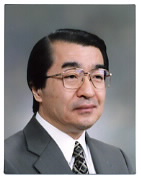 |
| Professor Yasuhiko Fujii |
Large facilities like those found at CERN in Switzerland have been studying science at the atomic scale for decades leading to some of the most important scientific breakthroughs of our time.
One of the most recent was the discovery of the Higgs boson by Professors Peter Higgs and Francois Englert who were awarded the 2013 Nobel Prize in Physics.
But what is a more effective technique in helping researchers like Higgs and Englert to understand a world so small its invisible to the naked eye - synchrotron X-rays or neutron radiation?
Both techniques are used at facilities like those in Switzerland, and both offer benefits. To help explain this and more ANSTO welcomed Professor Yasuhiko Fujii, President of The Asia-Oceania Neutron Scattering Association (AONSA).
In a talk titled: Small Science at Large Facilities in the Asia-Oceania Region, the Japanese physicist highlighted the scale of work being done and the number of facilities.
There are 16 neutron sources currently operating across the region and almost four times as many Synchrotron X-ray facilities. Two of these types of facilities are located in Australia - the OPAL research reactor in the Sydney suburb of Lucas Heights and the Australian Synchrotron at Clayton in Melbourne.
Professor Fujii highlights some of these facilities, the work they are doing and then confronts the commonly asked question about which scientific technique is better.
Want to know the answer?
Listen to Professor Yasuhiko Fujii's lecture to find out.
To listen to previous talks, visit our SoundCloud page: https://soundcloud.com/ansto-1
About the speaker: Professor Yushiko Fujii
Professor Yasuhiko Fujii is the President of the Asia-Oceania Neutron Scattering Association (AONSA). He is also the Director General of Quantum Beam Science Directorate, Japan Atomic Energy Agency (JAEA) and is responsible for scientific research based on the JAEA-owned large-scale beam facilities such as JRR-3 Reactor.
Professor Fujii received his Ph.D in Physics from Osaka University in 1973; and gained experience through working as a Research Associate of Institute for Solid State Physics at Tokyo University in 1970-1978 and as a Physicist of Physics Department at Brookhaven National Laboratory in 1979-1982. As a Professor he also conducted his research at the Institute of Materials Science at Tsukuba University and at the Institute for Solid State Physics at Tokyo University.
His major research focusses on experimental solid state physics and materials science. In particular he is interested in neutron and x-ray scattering studies of phase transition in spin-charge-lattice coupled systems with interactive frustrations.
Published: 18/10/2013


